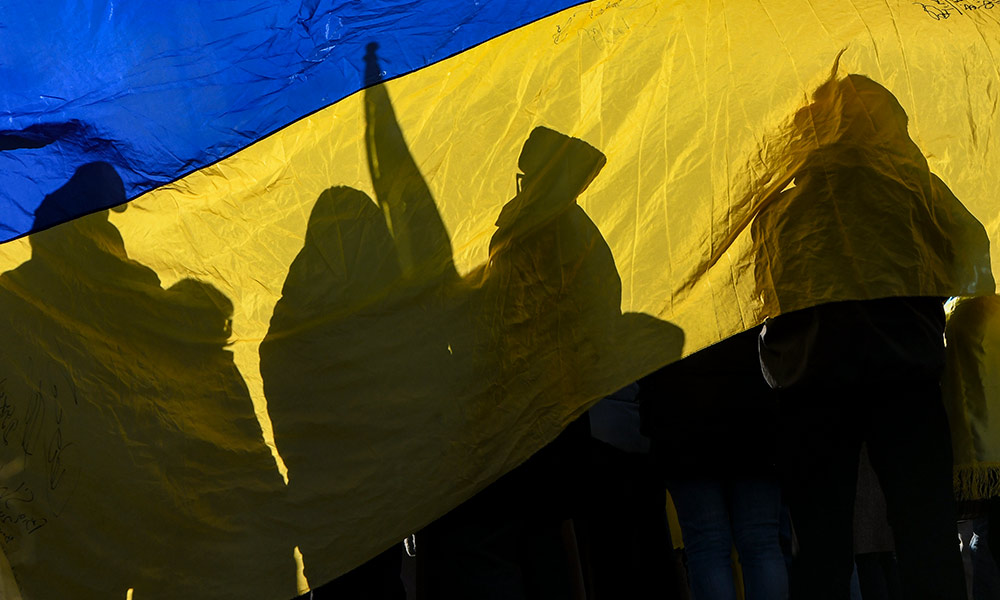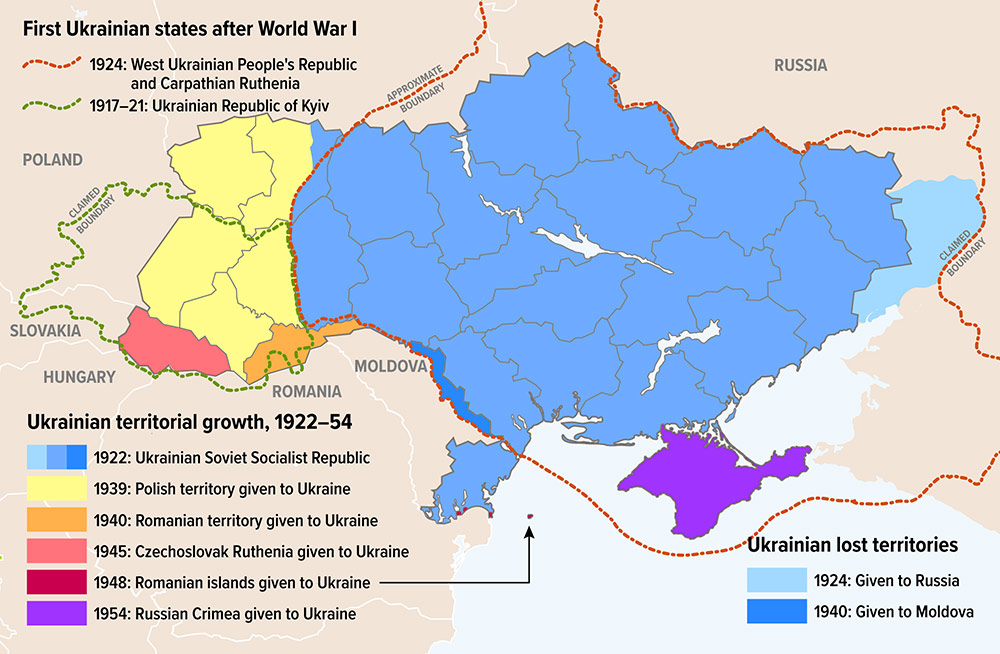Source: Fact-checking Putin’s claims that Ukraine and Russia are ‘one people’ : NewsCenter
 Demonstrators gather in Washington, DC, to protest Russia’s invasion of Ukraine. Rochester historian Matthew Lenoe examines some of the claims Vladimir Putin has made to justify the invasion. (Getty Images photo)
Demonstrators gather in Washington, DC, to protest Russia’s invasion of Ukraine. Rochester historian Matthew Lenoe examines some of the claims Vladimir Putin has made to justify the invasion. (Getty Images photo)sharing links
Go to www.addthis.com/dashboard to customize your tools
Rochester historian explains how Ukraine history is intertwined with Russia’s—but also with that of many other nations, empires, ethnicities, and religions.
“It’s a complicated history. But I want to be clear that what’s going on in Ukraine now is a brutal act of aggression with absolutely no justification,” says Matthew Lenoe, an associate professor of history at the University of Rochester, who is an expert on Russian and Soviet history, Stalinist culture and politics, the history of mass media, and Soviet soldiers in World War II.
While the history of the Ukrainian state probably cannot be traced back any earlier than 1918, Lenoe says “to be clear—today Ukraine is a nation state” where polling in elections indicates that the “vast majority of Ukrainians” want to preserve their independence.
Russian President Vladimir Putin has made several dubious historical arguments, most notably in his 5,000-word essay “On the historical unity of Russians and Ukrainians,” published on the Kremlin’s website in July 2021. In it, he elaborates on his assertion that Ukrainians and Russians are “one people” as a precursor to and defense of Ukraine’s invasion.
For instance, Putin claims that Ukraine didn’t exist as a separate state and had never been a nation. Instead, he argues, Ukrainian nationality was always an integral part of a triune nationality: Russian, Belorussian, and Ukrainian. Putin also writes that Russians, Ukrainians, and Belarusians share a common heritage—the heritage of a realm known as Kievan Rus (862–1242), which was a loose medieval political federation located in modern-day Belarus, Ukraine, and part of Russia.
“When Putin says this is the heritage of these three Slavic peoples—in one sense, he’s not wrong. But there’s no continuous line to be traced from this loose river confederation to the Russian state. And there’s also no continuous line to be traced from this loose confederation to the Ukrainian state,” says Lenoe, who is the author of Closer to the Masses: Stalinist Culture, Social Revolution, and Soviet Newspapers (Harvard University Press, 2004) and The Kirov Murder and Soviet History (Yale University Press, 2010). He is currently finishing his third book, tentatively titled Emotions, Experience, and Apocalypse in the Red Army, 1941–1942.
Ukraine, for its part, also points in its declaration of independence to a continuously existing state from 1000 CE. Says Lenoe, “Today, both Russians and Ukrainians are making claims about their direct descent from Kievan Rus that are simply mythical and wrong.”
Over the course of centuries, the area that is today Ukraine has been alternatingly swallowed up, controlled, or taken over by the Mongol Empire, later the Polish-Lithuanian Commonwealth, the Austro-Hungarian Empire, and the Russian Empire, while Crimea was at one point a client state of the Ottoman Empire. Between the World Wars, portions of western Ukraine were ruled by Poland, Romania, and Czechoslovakia.

Ukraine’s waxing and waning territory in the first half of the 20th century alone is “complicated and complex,” says Matthew Lenoe. (University illustration / Michael Osadciw)
In short, Ukraine’s territorial and ethnic history is “complicated and complex,” Lenoe says. Of course, its history is closely intertwined with Russian history, he adds. But it’s also intertwined with Polish history, with the history of the Greek Orthodox Church, even Romanian history, and the history of the Turkic peoples on the Eurasian Steppe.
Here the Rochester historian fact-checks several of Putin’s historical claims and discusses the ideas of nationhood and statehood, particularly with regard to Ukraine.



